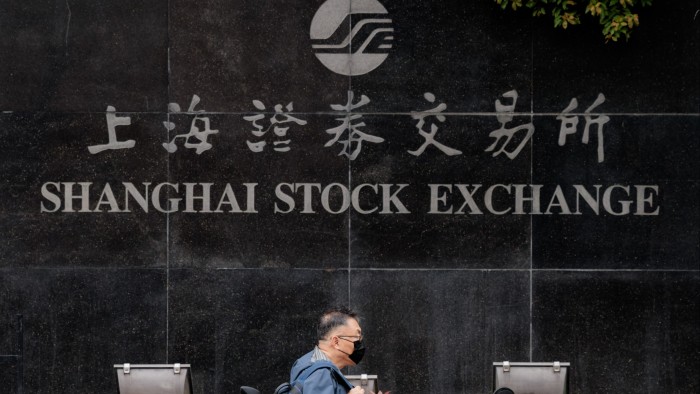Why China’s market slump is far from a crisis

Roula Khalaf, Editor of the FT, selects her favourite stories in this weekly newsletter.
The writer is head of global index portfolio management at Franklin Templeton
China’s stock market has certainly been battered recently, rattling both consumer and investor confidence. But we shouldn’t be too quick to categorise this disappointing phase as a crisis.
Investors should tread cautiously, of course, given that Chinese consumers remain nervous about a still-shaky property market and high youth unemployment. But rather than completely writing off the growth potential of China’s domestic market — one arguably too big to ignore — here are some points to consider.
The constructive summit between Presidents Joe Biden and Xi Jinping in California last year achieved some semblance of comfort over geopolitical tensions. And Xi’s recent meeting in Beijing with US business executives, including Apple CEO Tim Cook, discussing topics such as artificial intelligence, could bode well for stabilising relations.
We’ve been encouraged by China’s private investment in AI, which is second only to the US. China has also made impressive progress with industrial robot installations, which have now outpaced those of the rest of the world combined. Its innovators comprise nearly half of all global patent applications filed — greater than that of the US, Japan, South Korea or Germany.
And among the recent measures China has taken to stabilise its market and restore investor confidence is a tightening of the rules related to short selling in the market.
We are already beginning to see encouraging co-ordination between China’s fiscal and monetary policy. Following central bank moves at the start of this year that lowered the reserve requirement ratio (RRR) for financial institutions, regulators in March noted “ample” room for further cuts, which may enable substantial liquidity to be injected into the economy. And this year, Beijing is expected to provide at least $137bn in low-cost financing to help public housing programmes.
China’s remarkable development over the last few decades gave birth to a middle-class population of 500mn people who have now tasted prosperity. From 2017 to 2021, its luxury market tripled in size and should be supported by another projected 80mn middle-income earners joining the ranks of potential customers by the end of this decade. But this extraordinary pace of economic growth was always bound to hit some speed bumps and it’s important to remember that China is still undergoing a major transition from export-led growth to a more sustainable model that is increasingly driven by consumption and services.
China’s passenger vehicle exports, and particularly its electric vehicle sales, are other key areas of progress to watch. Last year, China nearly surpassed Japan as the world’s largest car exporter and in January, domestic retail passenger car sales were also up 57 per cent year-over-year. China has been the envy and fear of global electric-vehicle manufacturers. With great government support, Chinese upstart automakers have eclipsed foreign rivals to develop electric cars faster and develop new smart tech features.
Partly because of China’s increasing demographic troubles, there’s been much fanfare over whether India is ‘the next China’. India’s more youthful population switched places with China in April 2023 to become the world’s biggest nation. In September last year, India’s manufacturing and services PMI — already long in expansion mode — strengthened to a 13-year high, indicating a substantial rise in new business orders and improving business confidence. Notable technological and infrastructure developments were also achieved last year.
However, we should also keep in mind that India is a quite different economy from China, with its own distinct merits and challenges. Unlike China, India is a noisy democracy with still-high barriers to trade. In 2022, India had one of the highest import duties globally, according to the World Trade Organization.
So, perhaps only China is “the next China”. While investors do not expect a swift rebound in China’s market, some are seeing alluringly cheap valuations as an attractive entry point to the world’s second-largest economy. As of the end of February, the FTSE China RIC Capped Index was trading at a price/earnings ratio of just 9.44 times and price/book ratio of 1.15 times.
Further afield, China has endeavoured in recent years to increase its influence in Latin America. Trade agreements, foreign direct investment and loans have played an important role in strengthening ties with the region. All of which means that the sheer extent of China’s global influence should not be overlooked.
Comments